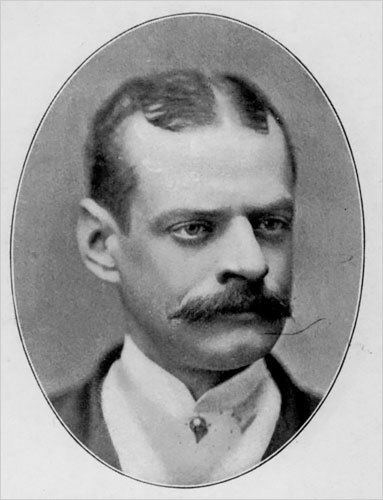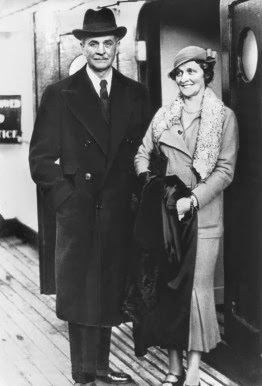Name William Astor, | Role Politician | |
 | ||
Full Name William Waldorf Astor Born March 31, 1848New York City, U.S. ( 1848-03-31 ) Relations William Backhouse Astor, Sr. (grandfather)William Backhouse Astor, Jr. (uncle)John Jacob Astor IV (cousin)William Waldorf Astor II (grandson)Francis David Langhorne Astor (grandson)Michael Langhorne Astor (grandson)John Jacob Astor VII (grandson)Gavin Astor (grandson)John Astor (grandson) Spouse Mary Dahlgren Paul (m. 1878–1894) Children Waldorf Astor, 2nd Viscount Astor, John Jacob Astor, 1st Baron Astor of Hever, Pauline Astor, Gwendolyn Enid Astor Parents John Jacob Astor III, Augusta Gibbs Grandchildren William Astor, 3rd Viscount Astor, David Astor, Michael Astor, Gavin Astor, 2nd Baron Astor of Hever, Jakie Astor Similar People John Jacob Astor IV, George Boldt, Waldorf Astor - 2nd Viscount, Nancy Astor - Viscounte, William Astor - 3rd Viscount | ||
William Waldorf "Willy" Astor, 1st Viscount Astor (March 31, 1848 – October 18, 1919) was a wealthy American-born attorney, politician, businessman, and newspaper publisher. He moved with his family to England in 1891, became a British subject in 1899, and was made a peer as Baron Astor in 1916 and Viscount Astor in 1917 for his contributions to war charities. He was a prominent member of the Astor family.
Contents
- 2 temple place gothic mansion built by william waldorf astor
- Early life and education
- Marriage and children
- Politics
- Move to England
- Philanthropy and peerage
- Death
- References

2 temple place gothic mansion built by william waldorf astor
Early life and education

William Waldorf Astor was born in New York City. He was the only child of financier and philanthropist John Jacob Astor III (1822–1890) and Charlotte Augusta Gibbes (1825–1887). His childhood was spent in Germany and in Italy under the care of private tutors and a governess. He grew up in a cold and distant household.
In his early adult years, Astor returned to the United States and began studies at Columbia Law School. He was called to the United States Bar in 1875. He worked for a short time in law practice and in the management of his father's estate of financial and real estate holdings.
Marriage and children
Astor married Mary Dahlgren Paul (born 1858, died 22 December 1894) on 6 June 1878. She is buried in Trinity Church Cemetery. They had five children:
Politics
After some time practising law, Astor thought he had found his true calling and an opportunity to make a name for himself outside of his family's fortune by entering the political realm. In 1877, with his eyes set on the United States Congress, Astor entered New York City politics as a Republican.
He was elected as a member of the New York State Assembly (New York Co., 11th D.) in 1878; and of the New York State Senate (10th D.) in 1880 and 1881. Astor was likely supported by the boss of the New York State Republican machine, the notorious Roscoe Conkling, with whom his family was involved.
In 1881, Astor was defeated by Roswell P. Flower as a candidate for the United States Congress. A second attempt at the seat also resulted in defeat. He could not compete with his Democratic opponent, Flower, and his shy nature could not handle the political attacks on his character. This was the end of his political career. The press used his political failures as fodder for more harsh criticisms. The press had already publicized his vast inheritance.
The coverage of his political defeats weakened his desire to remain in the United States. In 1882, President Chester A. Arthur appointed Astor Minister to Italy, a post he held until 1885. He told Astor, "Go and enjoy yourself, my dear boy." While living in Rome, Astor developed a lifelong passion for art and sculpture.
Upon the death of his father in February 1890, Astor inherited a personal fortune that made him the richest man in America. That year, he initiated construction of the luxurious Waldorf Hotel, being built on the site of his former residence. His cousin and rival Colonel John Jacob "Jack" Astor IV (1864—1912) built the adjoining Astoria Hotel in 1897, and the complex became the Waldorf-Astoria Hotel.
Move to England
In 1891 he fell into a family feud with socialite Caroline Webster "Lina" Schermerhorn (1830—1908), wife of Willy's uncle businessman William Backhouse Astor, Jr. (1829—1892) and mother of rival cousin Jack, over who should be the "official Mrs. Astor". After Lina won the argument, Willy moved with his wife and children to England. He rented Lansdowne House in London until 1893. That year he purchased a country estate at Cliveden-on-Thames in Taplow, Buckinghamshire from the Duke of Westminster.
To disappear from public view, in the summer of 1892, Astor faked his own death by having his staff report to American reporters that he had died, apparently from pneumonia. However, the ruse was soon discovered, whereupon Astor was mocked in the press.
In 1895 he bought the gothic mansion on the Victoria Embankment at Two Temple Place overlooking the Thames River. He commissioned an extensive $1.5 million renovation of what was to become a "crenellated Tudor stronghold" for managing his holdings.
Astor made several business acquisitions while living in London. In 1892, he purchased the Pall Mall Gazette, and in 1893 established the Pall Mall Magazine. In 1911, he acquired The Observer. In 1912 he sold the Magazine, and in 1914 made a present of the Gazette and The Observer, with the building in Newton Street and its contents, to his son Waldorf Astor.
In 1903 he acquired Hever Castle near Edenbridge, Kent about 30 miles south of London. The huge estate built in 1270 was where Anne Boleyn lived as a child. Astor invested a great deal of time and money to restore the castle, building what is known as the "Tudor Village," and creating a lake and lavish gardens. He also added the Italian Garden (including Fernery) to display his collection of statuary and ornaments.
In 1906 he gave his eldest son Waldorf Astor and his new daughter-in-law, Nancy Witcher Langhorne, the Cliveden estate as a wedding present.
In 1908, he opened The Waldorf Hilton, London in London's West End, to establish an American-style hotel in England.
Philanthropy and peerage
Having become a British subject in 1899, Astor became interested in gaining English social distinction. Among the charities benefited by his gifts were The Hospital for Sick Children, Great Ormond Street (to which he gave $250,000 in 1903); University College, London (including a gift of £20,000 in 1902 for professorships); the Cancer Research Fund; Oxford University; Cambridge University; the National Society for the Prevention of Cruelty to Children; the British Red Cross Society; Gordon Memorial College, Khartoum; the Soldiers and Sailors Families Association; and the Women's Memorial to Queen Victoria. His gifts to the war charities included $125,000 to the Prince of Wales's National Relief Fund; a similar amount to Princess Louise's Officers' Families Fund; $200,000 to the British Red Cross Society; $25,000 to Queen Mary's Employment Committee; and a similar sum to the Lord Mayor's National Bands Fund. He gave $5,000 to King Edward's Hospital Fund annually starting with its founding in 1897.
Such gifts were often honored by the grant of a title of nobility to the benefactor. On January 1, 1916, he was offered and accepted a peerage of the United Kingdom under the title of Baron Astor of Hever Castle in the County of Kent. On June 3, 1917, he was elevated to the rank of Viscount. The elevation was controversial; many felt that a rich American had bought his way into the English aristocracy.
Death
In the months before his death, Astor was criticized again in the press: his move to England, his support of peace during World War I, his being made a peer. Willy fell prey to the Press again. After going into self-imposed exile, he unexpectedly died of heart failure in the lavatory of his Brighton, Sussex home. His ashes were buried under the marble floor of the chapel (also called the Octagon Temple) at Cliveden.
